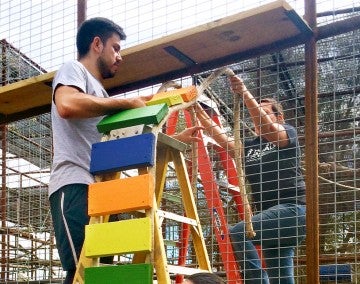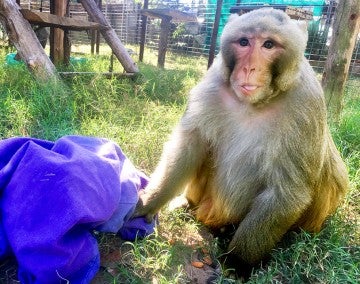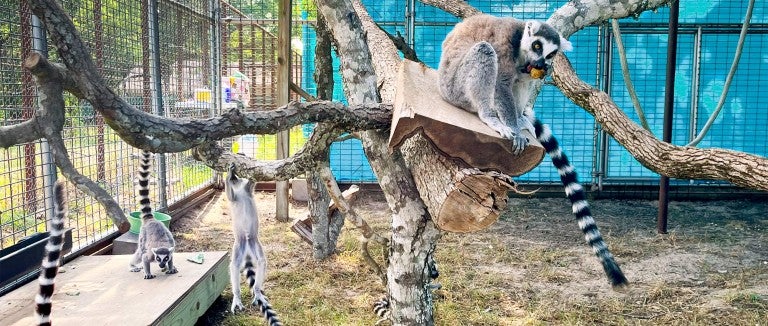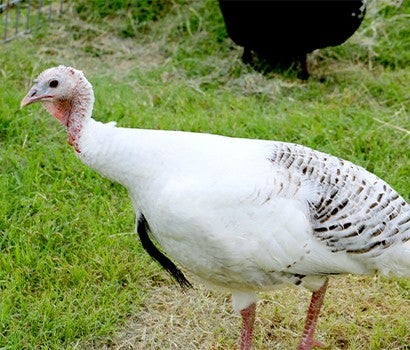Every morning, the teams at Black Beauty Ranch spread out across 1,400 acres to care for the nearly 650 animals who call the sanctuary home. It’s not an easy task. The sanctuary is home to around 40 species, meaning caregivers need a high level of knowledge about all sorts of animals. Insights into individual personalities and the animals’ previous lives also help caregivers craft personalized animal care plans.
It takes a lot of work and meticulous planning to fill in for Mother Nature, says Crispin Owen, who leads the facilities and maintenance team responsible for the sanctuary’s vital infrastructure systems. (Mother Nature doesn’t need an ATV to deliver daily necessities, but the sanctuary teams sure do!) Owen’s team also builds and maintains the unique habitats necessary to meet the animals’ needs.
When Black Beauty Ranch agreed to take in 10 lemurs from a now-defunct zoo in Puerto Rico, staff made sure they had done their homework. The sanctuary hadn’t had lemurs for a long time, so caregivers reached out to sanctuaries with the species to learn more about their care. Lemurs have stricter dietary limitations than other primates and don’t usually enjoy toys like other primates do, so caregivers crafted a specialized menu and worked with the facilities team to build an enclosure with large trees to climb—all in time for their arrival. Owen’s crew bought out the county’s supply of chicken wire to “baby proof” the enclosure, making sure that the tiniest lemurs would remain safely inside.


Other caregivers see similar physical and psychological trauma stemming from the animals’ past lives. Some of the primates who were pets had their canine teeth removed. Gizmo the rhesus macaque is mostly blind, likely from a brain implant he received while being used for biomedical research. Many horses who arrive from cruelty situations are very skittish and need space.
The sanctuary teams know they cannot undo all the systematic harms the animals have suffered, but they do everything they can to improve their quality of life. Gizmo has ramps throughout his enclosure to help him move around, and caregivers create trails of food to encourage him to check out new enrichment items.
It’s a tough job, says Christi Gilbreth, senior coordinator of outreach and development. “But it’s one we all love.”
On a hot June day, Orr collects clay from a hillside and mixes it with water to act as a natural sunscreen for the pigs. She rubs the mixture on the animals and laughs while they roll around under a sunshade. They’re going to be more comfortable now, she says, admiring her work. The pigs look like pigs should, their mud-strewn bodies close together as they laze in the grass and mud wallow.
Want more content like this?
This was written and produced by the team behind All Animals, our award-winning magazine. Each issue is packed with inspiring stories about how we are changing the world for animals together.
Learn MoreSubscribe

